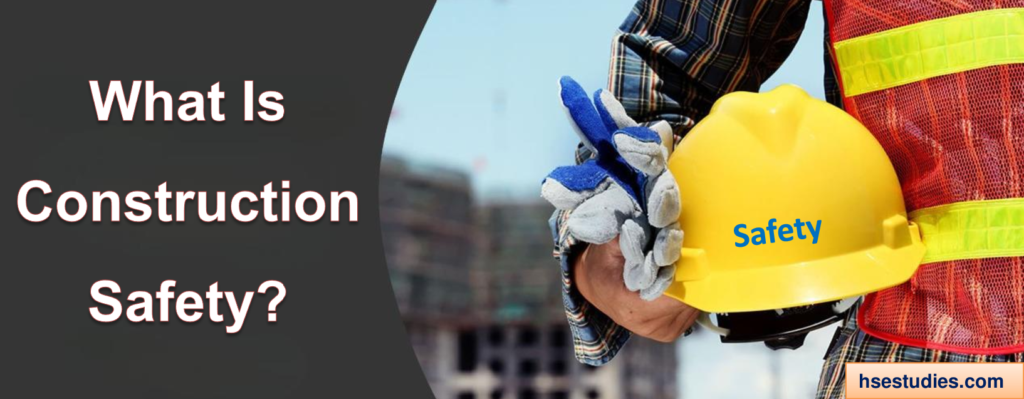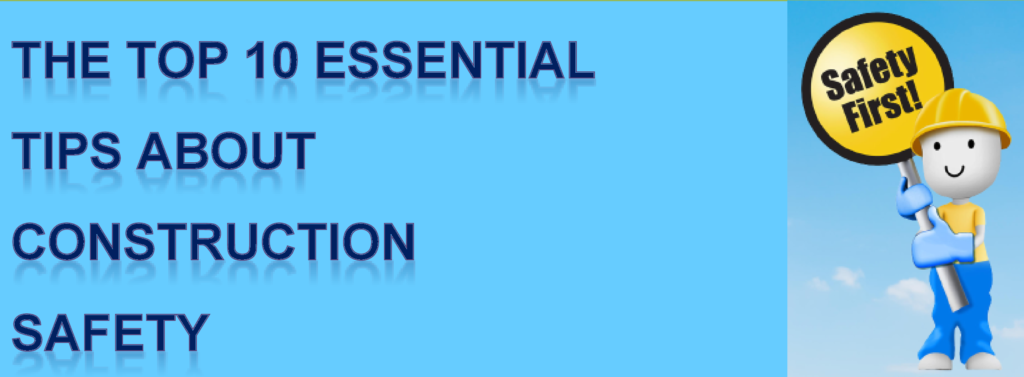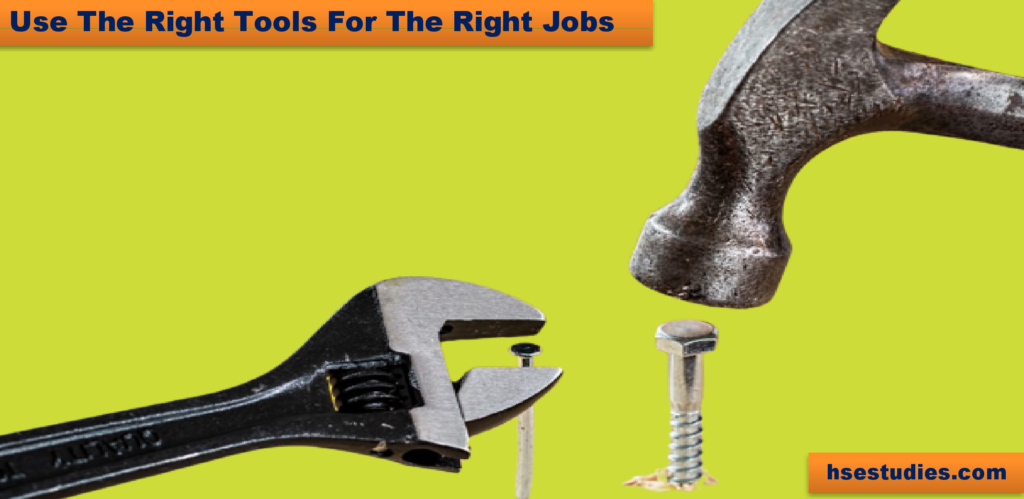
The top 10 essential Tips about construction safety that we will know through this article. These safety tips will effectively help to improve the workplace safety culture. A key component of construction safety is compliance with the safety and health regulations of the region.
What Is Construction Safety?
Construction Safety is a Safety principle involved in implementing safety guidance and procedures to avoid accidents at construction sites. The main aim of construction safety is to protect the workers from work-related injuries & illnesses, protect the property from being damaged, and protect the environment from being polluted by implementing effective safety procedures and measures at construction sites.
Construction safety aims to ensure that construction sites are not an immediate cause to harm the public around the construction sites or the employees at construction sites. It also ensures that the finished products of construction meet the required safety standards. A key component of construction safety is compliance with the safety and health regulations of the region. In this article, the top 10 essential tips about construction safety have been explored.

The Top 10 Essential Tips About Construction Safety
The construction site is a dangerous place to work if you are not complying with construction safety rules and regulations. In this article, there are the top 10 essential tips about construction safety that you must follow to keep yourself and others safe.

1. Wear Your PPE At All Times In The Workplace
PPE is the most essential equipment that you must wear at construction sites. You must ensure that you have worn the required PPE when you enter a construction site. PPE is crucial because it is the last line of defense. All workers and visitors must wear the necessary PPE to reduce their exposure to various hazards at construction sites.
The common PPEs include safety helmets, safety glass or goggles, protective clothing, hand gloves, safety shoes, and high visibility vests.
2. Do Not Start Work Without Safety Induction Training
Most workers get safety induction training at the beginning of a new project. In construction, every employee must have specific project safety induction training before they start a new job. Each site has different hazards and work operations. Make sure that you know what is going on so that you can take remedial controls to be safe.
After attending the safety induction training, you will know about the project’s required common PPEs, emergency contact details, emergency evacuation procedures, etc. That’s why safety induction is crucial before starting a new job.
3. Follow Safety Signs And Procedures
This is a type of communication media at construction sites because it warns and raises awareness about the health & safety of site employees and visitors. It carries crucial information related to safety procedures to keep site employees and visitors aware of existing hazards and control measures. Employees working at construction sites must be aware of different types of safety signs, such as prohibition, warning signs, mandatory signs, safe condition signs, and fire fighting equipment signs. Safety signs convey essential information about construction safety.
4. Keep Workplace neat & Clean
Poor housekeeping at construction sites is a common cause of slip & trip hazards. To avoid these hazards, the working area and tools container must be neat & clean. You must also ensure that all dust, debris, and other construction wastes are not lying at the worksites. All tools and materials required for the execution of the project should be arranged in an orderly manner. Construction sites must be cleaned daily to avoid slips and trip hazards.
5. Use The Right Tools or Equipment For The Right Tasks
The selection of the right tools or equipment for the right task is the most crucial thing that must be considered before executing any activities at construction sites. Misuse of tools and equipment can lead to severe personal injuries and even death. Do not use damaged and makeshift tools. Instead, use the appropriate tools to get the job done quicker & safer.

6. Conduct Daily Tool Box Talk (TBT) Meeting
The site supervisors and safety officers are responsible for conducting daily toolbox talk meetings among task operatives before the start of work or shift. These TBT meetings must be recorded in the safety department. The site supervisor and safety officer should focus primarily on existing hazards and their effective control measures during TBT meetings because it is an effective way to communicate among the working crew about construction safety. TBT meetings must be conducted in a common language of workers so that they can understand about construction safety.
7. Report Defects And Near Misses
If you find anything wrong at your worksite, don’t ignore it. Immediately report it to your concerned supervisor without fail. Prepare a near-miss report with the help of a near-miss or incident reporting form, or at least inform your supervisor immediately.
Use whatever systems or procedures are in place at your worksite for reporting health and safety concerns, but don’t forget to report incidents in any circumstances.
Action against site problems can be taken quicker if the management has been made aware of those problems. Immediate action can short out problems sooner before they lead to unwanted accidents or incidents.
8. Do Not Tamper With Equipment
If any equipment is not working or doesn’t look in good condition, follow rule number 7 and immediately report it to the concerned person. Don’t try to attempt any modifications or alterations if you are not an authorized or competent person to do so.
Don’t do any alterations to the scaffold structure, don’t remove guards from any moving machines, or don’t fix any defective equipment or machines if you are trained and competent to do so. Don’t tamper with equipment without proper authorization otherwise,
- You can get the blame from the management if something goes wrong.
- An unwanted event can occur and cause severe injury or property damage.
- You can also get hurt, or someone else can get hurt too.
9. Don’t Work In Doubt
Do not ever try to work in doubt in any circumstances. Unsure what to do? Or how to do something safely? Or do you think something is wrong? Stop working and ask the concerned supervisor.
It may take 5 to 10 minutes to check, but it can not be so easy to put things right once it goes wrong. So, it would be better to be safe than sustain unwanted incidents. Avoid mistakes on construction sites because they can cause severe injury and even death. Speak to your supervisor if you need further help and information.
10. Ensure Emergency Response Plan

An effective emergency response plan always guides the workers and visitors on what to do when emergencies like natural disasters, hazardous chemical spills, fire, or other emergencies occur. Having a dedicated emergency response team at construction sites is crucial to deal with emergencies if they occur.
Conclusion
Everyone who is going to be involved in construction activities must know about construction safety to complete their task safely. In this article, the top 10 essential tips about construction safety have been explained to carry out construction activities safely. Always keep following these essentials & crucial safety tips to avoid unwanted accidents or incidents at the construction site.
Q1 What Are The Types of Safety Signs?
Ans. There are five types of safety signs;
1) Prohibition signs
2) Warning signs
3) Mandatory signs
4) Safe condition signs
5) Fire fighting equipment signs.
Q2 Why Do We Need To Wear PPE?
Ans. PPE stands for personal protective equipment, which we use to protect ourselves at construction sites or while driving a car or riding a bike.
Q3 What Is Construction Safety?
Ans. Construction Safety is a Safety principle involved in implementing safety guidance and procedures to avoid accidents at construction sites.
